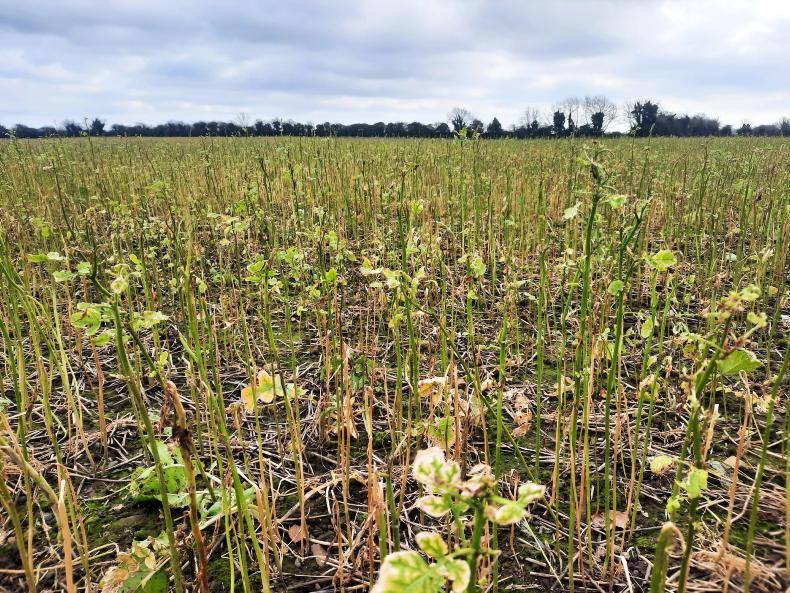The cutting of riparian buffers in the Agri-Climate Rural Environment Scheme (ACRES) is permitted from Sunday 1 September 2024.
The allowance worked well in 2023, coinciding with a marked improvement in weather, and allowed farmers to salvage some forage or low-quality bedding material of such areas.
The potential of achieving similar results in 2024 is lower, given buffer areas have been closed for much longer with herbage of poor quality, while ground conditions where many buffers are located is much more challenging.
Nevertheless, cutting is permitted as a management practice and will also help prevent invasive species from establishing.
It is important to note that areas cannot be grazed by livestock, while the application of pesticides or herbicides are not permitted, except for the spot treatment on noxious or invasive species.
Hedgerow management
It is also important to note that there is strict criteria for managing hedgerows in ACRES parcels.
The scheme specifications state that there is no requirement to cut hedgerows in ACRES parcels. However, if hedgerows are managed by cutting, then the following rules apply:
If existing hedges are greater than 1.8 metres in height, cutting or trimming is permitted once they are not cut below 1.8 metres from ground level (or top of bank where applicable). If existing hedges are less than 1.8 metres, do NOT cut or trim. The only exceptions are roadside hedgerows, hedgerows on external farm boundaries, newly established hedgerows (less than 10 years old), hedgerows that were recently coppiced or laid and hedgerows located in breeding wader hotspot mapped areas. Additional guidance
The specifications advise that where cutting hedgerows, refrain from cutting all hedgerows in one year.
It says that for hedgerows managed by top trimming, it is advisable to cut these in an A shape, which allows the base and sides to receive more light and result in a denser structure that is valuable for wildlife.
“Where possible, leave at least one thorn tree uncut within each hedgerow. It is also advisable that escaped hedges (ie hedges that were never topped and have developed into a treeline) should only be side-trimmed and not topped.
"Good-quality hedgerows will greatly enhance the benefits of other linear actions such as grass margins, winter bird food strips, unharvested cereal headlands and ryegrass seed-set.”
The cutting of riparian buffers in the Agri-Climate Rural Environment Scheme (ACRES) is permitted from Sunday 1 September 2024.
The allowance worked well in 2023, coinciding with a marked improvement in weather, and allowed farmers to salvage some forage or low-quality bedding material of such areas.
The potential of achieving similar results in 2024 is lower, given buffer areas have been closed for much longer with herbage of poor quality, while ground conditions where many buffers are located is much more challenging.
Nevertheless, cutting is permitted as a management practice and will also help prevent invasive species from establishing.
It is important to note that areas cannot be grazed by livestock, while the application of pesticides or herbicides are not permitted, except for the spot treatment on noxious or invasive species.
Hedgerow management
It is also important to note that there is strict criteria for managing hedgerows in ACRES parcels.
The scheme specifications state that there is no requirement to cut hedgerows in ACRES parcels. However, if hedgerows are managed by cutting, then the following rules apply:
If existing hedges are greater than 1.8 metres in height, cutting or trimming is permitted once they are not cut below 1.8 metres from ground level (or top of bank where applicable). If existing hedges are less than 1.8 metres, do NOT cut or trim. The only exceptions are roadside hedgerows, hedgerows on external farm boundaries, newly established hedgerows (less than 10 years old), hedgerows that were recently coppiced or laid and hedgerows located in breeding wader hotspot mapped areas. Additional guidance
The specifications advise that where cutting hedgerows, refrain from cutting all hedgerows in one year.
It says that for hedgerows managed by top trimming, it is advisable to cut these in an A shape, which allows the base and sides to receive more light and result in a denser structure that is valuable for wildlife.
“Where possible, leave at least one thorn tree uncut within each hedgerow. It is also advisable that escaped hedges (ie hedges that were never topped and have developed into a treeline) should only be side-trimmed and not topped.
"Good-quality hedgerows will greatly enhance the benefits of other linear actions such as grass margins, winter bird food strips, unharvested cereal headlands and ryegrass seed-set.”










SHARING OPTIONS